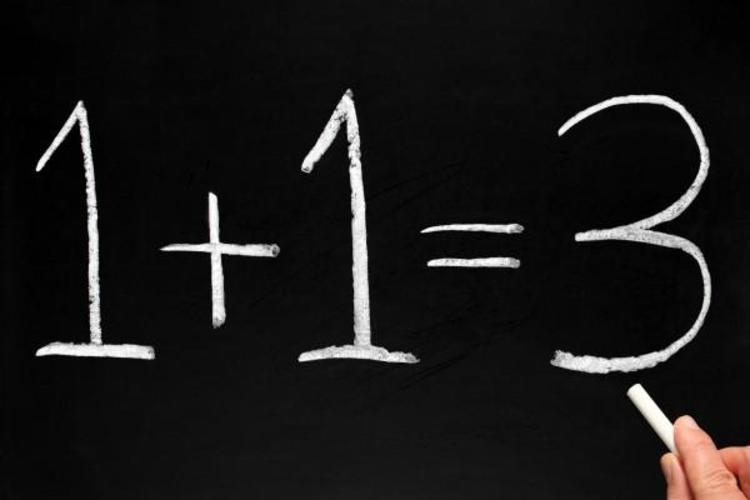Trigonometric Arithmetic I
 {
x
+
y
=
tan
−
1
1
−
a
2
2
a
tan
x
tan
y
=
a
2
,
∣
a
∣
<
1
{
x
+
y
=
tan
−
1
1
−
a
2
2
a
tan
x
tan
y
=
a
2
,
∣
a
∣
<
1
( x − tan − 1 a ) 2 0 1 5 + ( y − tan − 1 a ) 2 0 1 5 = ?
The answer is 0.
This section requires Javascript.
You are seeing this because something didn't load right. We suggest you, (a) try
refreshing the page, (b) enabling javascript if it is disabled on your browser and,
finally, (c)
loading the
non-javascript version of this page
. We're sorry about the hassle.
2 solutions
Let b = x + y − 2 arctan a then b = arctan ( 1 − a 2 2 a ) − 2 arctan a
Then tan b = tan ( arctan ( 1 − a 2 2 a ) − 2 arctan a )
Using formulas tan ( α − β ) = 1 + tan α tan β tan α − tan β and tan 2 α = 1 − tan 2 α 2 tan α , we have:
tan b = 1 − tan ( arctan ( 1 − a 2 2 a ) ) tan ( 2 arctan a ) ) tan ( arctan ( 1 − a 2 2 a ) ) − tan ( 2 arctan a ) )
= 1 − tan ( arctan ( 1 − a 2 2 a ) ) tan ( 2 arctan a ) ) 1 − a 2 2 a − 1 − tan 2 arctan a 2 tan arctan a
= 1 − tan ( arctan ( 1 − a 2 2 a ) ) tan ( 2 arctan a ) ) 1 − a 2 2 a − 1 − a 2 2 a = 0
so, tan b = 0 < = > b = 0
Hah whoa this is absolutely not what I expected as a solution O_o! I guess you can never have too much creativity :P
One min, lemme post the book solution
And I'm not entirely sure if your solution is can even be justified. It seems like you never even considered the second equation in your calculations. Well, if this problem has such a big loophole, then I think I'll have to rephrase this problem a bit.
Thanks for your solution, and sorry about me having to change it :/
Log in to reply
yes, now the solution requires using both conditions :)
btw nice problem:)
We have:
{ x + y = tan − 1 1 − a 2 2 a tan x tan y = a 2 , ∣ a ∣ < 1
From the first equation, we find
tan ( x + y ) = 1 − a 2 2 a ,
i.e.
1 − tan x tan y tan x + tan y = 1 − a 2 2 a .
Taking the second equation into account, we find
1 − a 2 tan x + tan y = 1 − a 2 2 a ,
or
tan x + tan y = 2 a .
From the system of equations
{ tan x + tan y = 2 a tan x tan y = a 2
we find tan x = a ; tan y = a . From here, we see that
x = 1 8 0 ° n + tan − 1 a , y = 1 8 0 ° m + tan − 1 a , n ∈ Z .
But only one of these is arbitrary, since, in agreement with the first equation, the magnitude of x + y , as the main function of the arctangent, must be bound within − 9 0 ° and 9 0 ° .
To deduce valid values of n and m , we substitute the found expressions into the first equation. We obtain
1 8 0 ° ( n + m ) + 2 tan − 1 a = tan − 1 1 − a 2 2 a . ( A )
In agreement with the condition that ∣ a ∣ < 1 , the angle tan − 1 a is bound between − 4 5 ° and 4 5 ° , i.e. 2 tan − 1 a is bound between − 9 0 ° and 9 0 ° .
Similarly, 1 − a 2 2 a (the main function of the arctangent) is also bound to the same angles.
Therefore, these two angles differ by less than 180°. Thus, equation A is true only when n + m = 0 .
Hence,
x = 1 8 0 ° n + tan − 1 a , y = − 1 8 0 ° n + tan − 1 a , n ∈ Z .
And finally,
( x − tan − 1 a ) 2 0 1 5 + ( y − tan − 1 a ) 2 0 1 5 = ( 1 8 0 ° n + tan − 1 a − tan − 1 a ) 2 0 1 5 + ( − 1 8 0 ° n + tan − 1 a − tan − 1 a ) 2 0 1 5 = ( 1 8 0 ° n ) 2 0 1 5 − ( 1 8 0 ° n ) 2 0 1 5 = 0